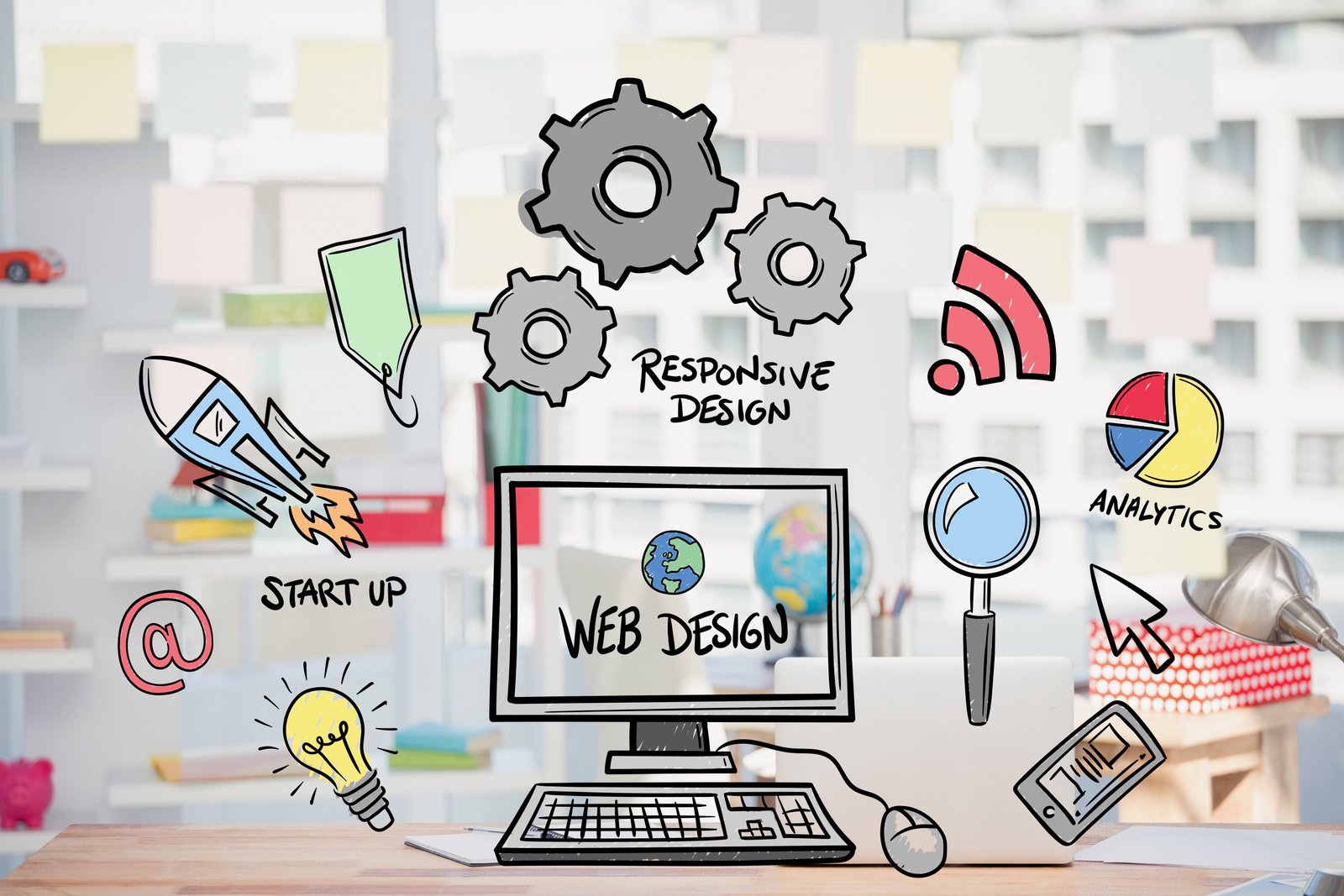
Web Design Trends of 2025: From Neo-Brutalism to AI-Driven UX
The digital world never stands still, and web design is one of the fastest-evolving fields in tech. As we move through 2025, the emphasis has shifted from just looking good to feeling intuitive. It’s all about functionality, inclusivity, and AI-enhanced personalization.
Whether you’re a freelance designer, an agency creative, or just passionate about pixels and UX, this blog explores the top web design trends shaping 2025 and how to apply them to your projects.
Neo-Brutalism: Bold, Raw, and Honest
2025 has seen a dramatic rise in Neo-Brutalism, a design style that embraces raw aesthetics, flat colors, visible grids, and bold typography.
It’s a direct reaction to over-polished minimalism. Neo-brutalist websites feel edgy, authentic, and even a bit uncomfortable, which is exactly the point.
Why it works:
- Grabs attention in a sea of sameness
- Appeals to Gen Z’s love for anti-aesthetic aesthetics
- Great for portfolio sites, music, fashion, and niche brands
Use stark backgrounds, large typefaces, no drop shadows, and minimal UI layering.
AI-Driven Personalization and UX
AI is no longer just behind the scenes, it's front and center in 2025’s best web designs.
Websites now adapt in real-time using AI-driven personalization:
- Changing homepage content based on previous visits
- Reordering products based on user behavior
- Offering predictive search and chatbot assistance on entry
Adobe Firefly, Framer AI, Jasper for content, and tools like Mutiny or Webflow Logic for dynamic UX.
The challenge? Helpfully use AI, not a creepy one.
3D & Immersive Visuals (Without Killing Load Speed)
With web rendering tech improving and Core Web Vitals stricter than ever, designers in 2025 are creating 3D visual experiences that are both immersive and lightweight.
- Interactive product previews
- Scroll-triggered 3D transitions
- Micro 3D icons or floating UI elements
WebGL, Three.js, and Lottie (for animations) are big players. But remember clarity and complexity. Always test performance on mobile.
Motion Design That Guides the Eye
Microinteractions, subtle scroll effects, and hover animations are no longer just "extras" — they’re essential tools for storytelling and user guidance.
In 2025,motion is used to:
- Lead users to CTAs
- Reveal content as users scroll
- Indicate form validation or errors
Liquid animations smooth transitions between UI states that feel like water or fabric.
Keep it minimal and purposeful. Don’t animate just because you can.
Dark Mode as Default
Dark mode has graduated from a “nice-to-have” to a “need-to-implement.” With more users spending time online at night, dark backgrounds reduce eye strain and look ultra-modern.
- Use muted accent colors (neon is out, sage is in)
- Avoid full black — opt for deep gray tones
- Make sure text contrast meets accessibility standards
You can even offer auto-switching based on device or time of day using CSS prefers-color-scheme.
Inclusive and Accessible Design
Accessibility is no longer just about compliance, it’s part of great design. In 2025, accessible websites will be cleaner, faster, and often rank better on search engines.
Best practices include:
- Proper heading hierarchy
- Descriptive alt text
- Keyboard navigation
- High contrast and readable fonts
Tools like Stark, Axe, and Lighthouse can help you audit your designs.
Custom Cursors and Interactive UI Elements
Custom cursors are popping up more frequently, often transforming based on interaction zones (e.g., enlarging over clickable content or morphing into icons).
- These playful elements make browsing feel more like exploring.
- Portfolios
- Creative agency sites
- Interactive landing pages
But don’t let custom cursors interfere with usability — always offer a fallback experience.
Modular and Grid-First Layouts
With responsiveness being a non-negotiable, modular design systems are in demand.
In 2025, designers are creating:
- Grid-first layouts with defined breakpoints
- Flexible content blocks (especially for CMS-driven sites)
- Reusable components in tools like Figma or Webflow
These layouts make updates easier, design more scalable, and make mobile optimization smoother
Typography Takes Center Stage
Bold, expressive typography is no longer just for headlines. Designers are using font choice as a core branding element, sometimes even replacing graphics entirely.
Trends in 2025:
- Kinetic type (animated words)
- Serif-meets-sans combos
- Overlapping and broken layouts with text as art
Use typography to express emotion, not just information.
Final Thoughts
Web design in 2025 is a dance between bold creativity and smart usability. As users become more tech-savvy and demand faster, more intuitive experiences, your designs need to balance visual flair with functional clarity. The best websites this year are visually memorable, adaptively intelligent, and intuitively human
So, whether you’re revamping your portfolio or launching a new client site, use these trends as inspiration, and let the user experience guide your design decisions.

